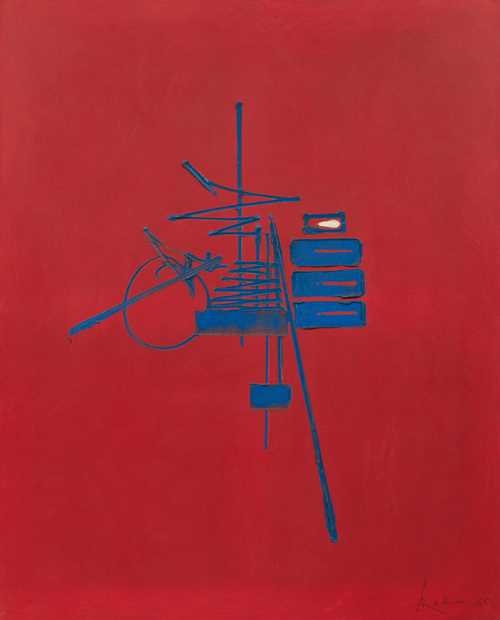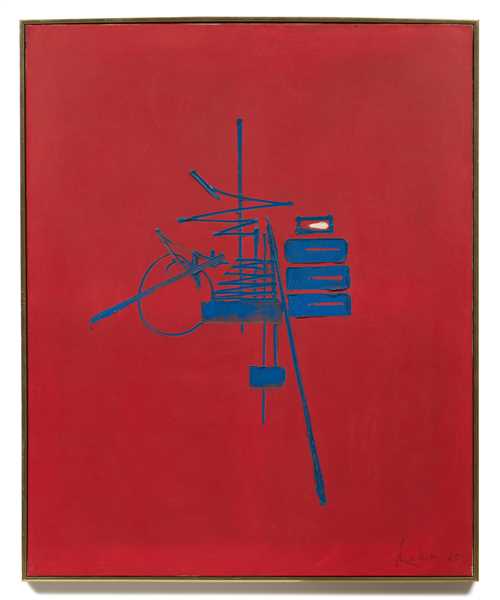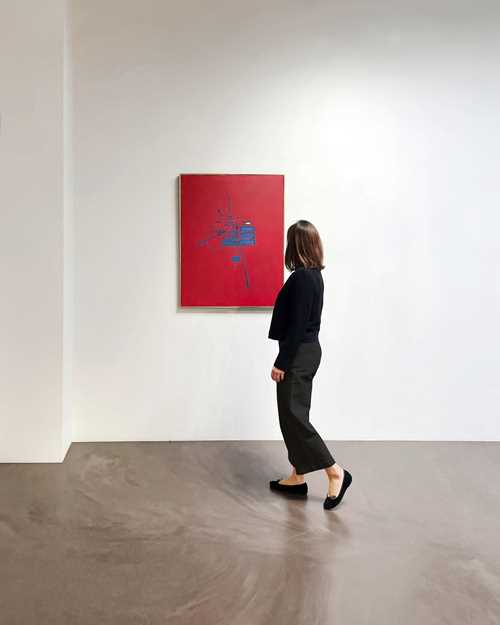
Lot 3412* - A207 PostWar & Contemporary - Thursday, 30. November 2023, 02.00 PM
GEORGES MATHIEU
(Boulogne-sur-Mer 1921–2012 Paris)
Fzey. 1965.
Oil on canvas.
Signed and dated lower right: Mathieu 65, also titled on the stretcher: Fzey.
100 × 81 cm.
Provenance:
- Villa Grisebach Berlin, Auction 2nd June 1989, lot 220.
- Purchased from the above by the present owner, since then private collection Germany.
Informel art dominated the 1950s and 1960s, with different countries having different interpretations and permutations. For the Americans it would be the Abstract Expressionism of a Jackson Pollock, in Germany the Informel of an Emil Schumacher or Fritz Winter, and for the French, Tachism, for which Georges Mathieu was one of the most important exponents. In 1957 Mathieu travelled to Japan, where his fascination with calligraphy, a crucial component of Tachism, began.
Mathieu used the fine, sweeping lines of calligraphy to create his dynamic, spontaneous compositions. He did not, of course, make use of the actual characters or their religious significance, but employed them as a liberated, informal, expressive language of shapes in order to realise his art. For him, signs were forms of abstraction and offered him the possibility of speed.
"Fzey" from 1965 is an outstanding example from Mathieu's mature oeuvre. The background is a deep red and on it a spontaneous, dynamic mesh of blue lines, applied quickly and partly with the finger, draws the viewer's gaze inwards. The concentration on two colours and the strong contrast between the calm monochromatic background and the lively, jagged composition are what make this painting so appealing.
- Villa Grisebach Berlin, Auction 2nd June 1989, lot 220.
- Purchased from the above by the present owner, since then private collection Germany.
Informel art dominated the 1950s and 1960s, with different countries having different interpretations and permutations. For the Americans it would be the Abstract Expressionism of a Jackson Pollock, in Germany the Informel of an Emil Schumacher or Fritz Winter, and for the French, Tachism, for which Georges Mathieu was one of the most important exponents. In 1957 Mathieu travelled to Japan, where his fascination with calligraphy, a crucial component of Tachism, began.
Mathieu used the fine, sweeping lines of calligraphy to create his dynamic, spontaneous compositions. He did not, of course, make use of the actual characters or their religious significance, but employed them as a liberated, informal, expressive language of shapes in order to realise his art. For him, signs were forms of abstraction and offered him the possibility of speed.
"Fzey" from 1965 is an outstanding example from Mathieu's mature oeuvre. The background is a deep red and on it a spontaneous, dynamic mesh of blue lines, applied quickly and partly with the finger, draws the viewer's gaze inwards. The concentration on two colours and the strong contrast between the calm monochromatic background and the lively, jagged composition are what make this painting so appealing.
CHF 40 000 / 60 000 | (€ 41 240 / 61 860)
Sold for CHF 75 000 (including buyer’s premium)
All information is subject to change.



